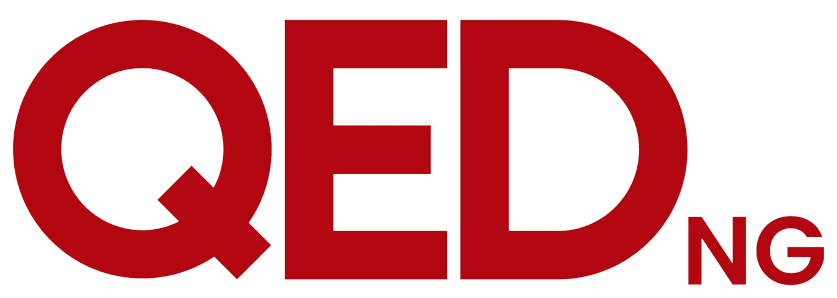Nigeria’s second oldest secondary school, founded by an individual — Ibadan Boys’ High School — clocks 80, and the old boys are on a mission to make their school great again, writes TAIWO OBE.
By 1938, Ibadan, the largest and most populous city in Nigeria and the second most populous in Africa after Egypt’s Cairo, had only two secondary schools which could admit boys. Total number of students in both schools was 293. As it were, because both schools are owned by missionaries or the colonial authorities, intake was not just low but it was also open to all Nigerians, despite that they were located in the city.
So, many who were qualified for secondary education had to seek admission in other parts of the country, particularly Lagos, which had a larger number of government and missionary schools.
A product of one of the schools (Ibadan Grammar School, founded by the Church Missionary Society but with the support of the people) and an Ibadan indigene, Timothy ‘Lajide (T.L.) Oyesina, decided to do something.
In 1938, he turned one of the rooms in his residence at a high-density-but-relatively-developed area called Oke Bola into a classroom — and that is how the seed of what became Ibadan Boys’ High School (IBHS) was sown. This is how Oyesina recorded it in the School Log Book (a tradition that principals of the school have followed) on Tuesday 26 July 1938: “The Ibadan Boys’ High School (Domini Opera Pro Bono Publico), the first Private School in Ibadan, is with the Government sanction opened today with 10 (ten) pupils (Std. VI, 6; Std V, 4). I am the only teacher on the staff. Prayers and Benediction are said by the Revd. D. A. Williams.”
It became the second secondary school to be founded by an individual. The other, Aggrey Memorial College, a co-ed, was founded seven years earlier in Arochukwu, eastern Nigeria, by an educationist named Alvan Ikoku. He named it after James Emmanuel K. Aggrey, an eminent Ghanaian educationist, who was his teacher at Hope Waddell Training Institute, Calabar, south-eastern Nigeria, which had been founded in 1895 by United Presbyterian missionaries.
Tragedy. Triumph. Atrophy.
Within its first decade, Oyesina’s school went through hills and valleys which could have swallowed him, but he remained unbowed.
In 1943, the first block of classrooms built by him was razed by fire. The people of Ibadan rallied round to save the situation. So did the Native Administration. The following year, a fierce thunderstorm ravaged Ibadan, and IBHS was not spared. Then in 1947, the colonial education authorities ordered the closure of the school for not conforming to the Education Code; lack of requisite staff nor facilities, yet it had a large number of students. The school was reopened in January 1948, after Oyesina struggled to meet the conditions, particularly having a university graduate as principal and more qualified teaching staff. Oyesina was designated as Manager & Proprietor but he could not be principal as his qualification (a Teacher’s Certificate) was insufficient.
More qualified teachers and principals. New physical structures. Laurels in academics, athletics and football competitions (in the city and regionally), excelling students and more. Even the education authorities commended the efforts by Oyesina and his team to transform the school from being derided as one for ne’er-do-wells to a great and good school.
1975. The Federal Military Government took over private schools. By the way, apart from IBHS, Oyesina founded other schools, including Ibadan City Academy, a commerce-oriented secondary school, and five primary schools. Was Oyesina weighed down by this Government action? What was known is that after a long indisposition, the great man died on 14 May 1975. For IBHS, not long after, the downturn began.
Old boys take over
2003. The old boys, under the aegis of the Ibadan Boys’ High School Old Boys’ Association (IBHSOBA), decided to wheel things back, and radically too. IBHSOBA elected an executive council charged with turning things around.
According to the man who was made the National President, Olabode Amao, an octogenarian industrialist: “When we were elected, the school’s name had been changed to Timothy Oyesina Boys’ High School, most of the school’s facilities were dilapidated and the academic performance was poor. So, we set to work and by the Grace of God and the support of some old boys we’ve got our school on the rise again.”
So true. The school’s name was reversed to IBHS and individuals and sets began to do what could be done to, let’s borrow that Trumpian phrase, Make IBHS Great Again.
The tempo of the transformation increased recently as the old boys decided to commemorate the school’s 80th anniversary grandly. Just as some sets have embarked on projects including reconstruction of the driveway with paving stones, building of an e-Library, provision of a standard sick-bay, borehole and water reticulation, rehabilitation of the laboratories, upgrading the ICT infrastructure and erecting a multipurpose court for ball game and tennis, some individuals are supporting with scholarships while the National IBHSOBA is tackling projects such as erecting a new gate/house, scaling up the school’s perimeter fence, rehabilitating the school hall and constructing drainages. For this, the national body had levied every old boy a minimum amount.
The projects will be commissioned on Saturday, 27 October, 2018, which is the last day of a three-day commemoration of the 80th anniversary. Other activities lined up include a Career Talk, Medical Outreach, presentation of a commemorative magazine and a night of socials.
You are an old boy of IBHS and you’ve not been part of this? Call the principal, Olasupo Abubakar, who is also an old boy, on +234 8052467557, or get in touch with any of your classmates. Today. Now.
From all indications, the alumni are poised to keep the standards up and soaring.
- Originally published here










